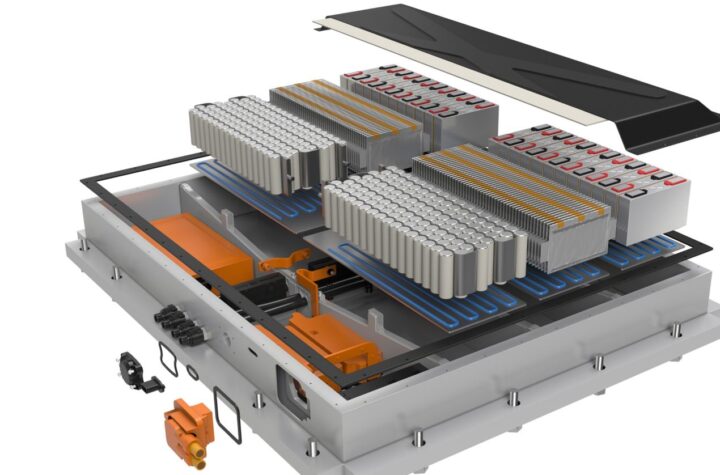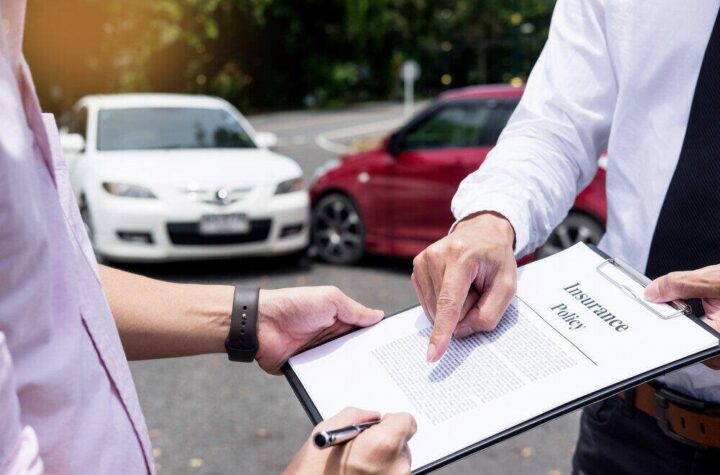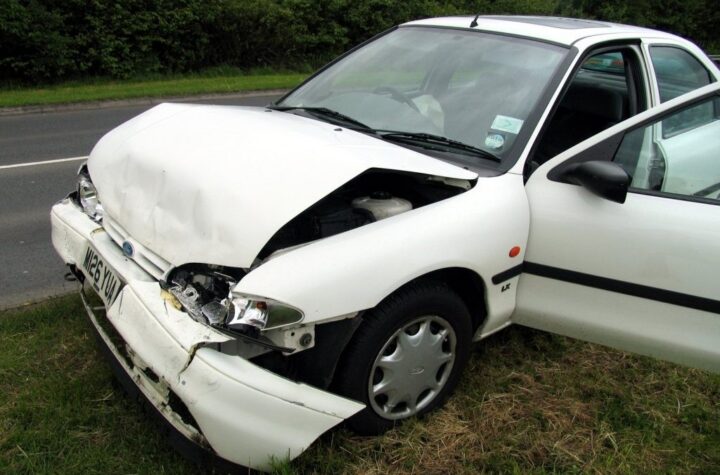
EU legislation now bans the fitting and selling of old style metal bull bars and encouraging new, energy absorbing Frontal Protection Systems which enhance the safety of vehicles.
The UK Minister of State for Transport has confirmed it is illegal to continue to manufacture, market non approved metal bull bars (no sale is necessary to be breaking the law) and sell metal bull bars that do not comply with the new EU legislation (Directive 2005/66/EC) for pedestrian protection. The maximum penalty to be imposed within the UK is 12 months in prison and a substantial £20,000 fine.
By 2012, all automotive manufacturers selling vehicles in the EU will have to incorporate pedestrian protection within their vehicles. For the UK-based Concept Mouldings Ltd (CML), this is good news as its revolutionary Endura Frontal Protection System (FPS) meets the requisite EU specifications within all disciplines of pedestrian protection and according to the Vehicle Certification Agency, CML is the only UK manufacturer known to have developed a non-rigid FPS that has been demonstrated to comply with the requirements of the EU legislation.
According to CML, its Endura FPS makes vehicles up to 50 times safer for vulnerable road users such as pedestrians and cyclists. Endura technology has been tested since 1991 on a wide range of vehicles including light commercial vehicles (LCVs), 4x4s and SUVs. CML claims that its latest Endura FPS model reduces the risk of head injury from over 99 per cent in the worst case down to less than 1 per cent. Risk of injury to the pelvic and abdomen, upper leg and lower leg is also substantially reduced, in line with the requirements for 2012
CML says that Frontal Protection Systems are the natural successor to the notorious bull bars but instead of making vehicles more dangerous, they make them safer. The composite materials used absorb massive amounts of energy and protect pedestrians from hard parts at the front of vehicles, such as the bonnet leading edge, radiator and engine, whilst still offering protection to the vehicle in an impact situation.
CML specializes in creative engineering solutions for the automotive industry (OEM) based on sophisticated molding and tooling technology. For over 15 years, CML has successfully serviced the automotive industry, manufacturing and supplying vehicle moldings and accessories. For over 10 years, CML has supplied, (using their patented technology), Land Rover with FPSs on a variety of models including the Land Rover P38A Range Rover. As time progressed, CML expanded the program to supply bespoke products for additional models such as the V6 Freelander, Defender and also the Discovery models..
CML offers retrofit options as well as products that can be integrated into the vehicle design prior to manufacture. The company holds world patents and patents pending on a number of such integrated solutions and says it is actively seeking joint ventures with research, technology and manufacturing partners to assist in integrating passive and active pedestrian safety solutions.
Having proven pedestrian risk of injury can be minimized by the use of energy absorbing technology, CML believe its active and passive solutions could employ the Endura FPS to active pre-collision positions and integrate simultaneous deployment of airbags, to protect the pedestrian from the vehicle windscreen, which they believe will make a real difference to real world accidents for the vulnerable road user.
The dipping of vehicle front and deployment of airbags encourages the pedestrian over the vehicle bonnet onto a safer cushioned surface, thus putting the pedestrian into a controlled area on the vehicle. Simultaneous deploying airbags also reduces the risk of pedestrians being forced under the wheels of a vehicle. In a vehicle-to-vehicle impact situation the cost of repair would be greatly reduced as air bags would only deploy when a vulnerable road user is detected within the crash zone and the extra energy absorbing surface would minimize vehicle damage to both vehicles .
A number of current vehicle designs already have molded fronts, so all or parts of the system outlined above could be incorporated. This would allow vehicle manufacturers to retain their creative freedom upon frontal design and distinctive image with little change to the external appearance of the vehicle.
Integrating the above will certainly contribute to saving countless lives and serious injuries across Europe.
“Historically, fleet companies have focused on minimizing the costs of running a fleet of company vehicles. Crashes cause a number of direct and hidden costs, such as vehicle repair, replacement and lost productivity. However, as changing online shopping habits lead to more vehicles in residential areas, the risk to pedestrians and children in particular is increasing. Fleet owners will now be able to meet corporate social responsibility goals by doing everything they can to make its vehicles safer for vulnerable road users and start saving lives, while at the same time gaining a spin off benefit of reducing vehicle damage and related costs, reducing insurance claims and time off the road,†says CML.
Automotive Industries spoke to Ian Finney, managing director of Concept Mouldings.
AI: How will pedestrian safety legislation impact the front-end design of all vehicles?
Finney: Vehicles are being designed to meet the Transport Research Laboratory (TRL) standards for pedestrian protection which require sloping fronts and large bumper areas to minimize injury to the pedestrian leg and pelvic areas. We believe, with our “out the box thinking†vehicle designs can be maintained with individual styling needs and still meet the pressing requirements for pedestrian safety, without affecting occupant safety which has evolved upon vehicles over recent years. Global engineering solutions are required to meet the real world accident statistics which are rising in both the developed and under developed world.
AI: Please tell us a little bit about CML’s R&D efforts that helped design the Endura FPS.
Finney: Concept Mouldings have been working with pedestrian protection technology since the early 1990’s. The adverse publicity regarding “Metal Bull Bars†stimulated our thought process to develop a product that did not exacerbate the problems of the vehicles themselves but to enhance the safety of the vehicle for vulnerable road users with the introduction of energy absorbing surfaces.
Utilizing our experience gained from previous developments of FPSs, we launched into the aftermarket. We immediately began to identify how for both niche and volume applications these energy absorbing systems could make a real difference to pedestrian safety.
The revolutionary technology within Endura is not incorporated with the sole purpose of being an aftermarket item. The composite material absorbs considerable amounts of energy, working efficiently within a given packaging space. The energy is absorbed locally to overcome the inertia of the products overall weight and then continues to absorb energy throughout impact, before the stiffer structures are required to maintain occupant safety in a vehicle-to-vehicle, higher speed impact.
Throughout this extensive learning process we have patented the innovative solutions. We recognize that to incorporate such solutions within vehicle design we need technology partners and a vehicle manufacturer to orchestrate its required technology partners in making the difference to pedestrian safety.
AI: What are some of the other technologies CML is working on for pedestrian and other auto-related safety measures?
Finney: We are currently evaluating vehicles outside the M1 and N1 classification to verify if a bus or HGV integrated with Endura technology could absorb the energy of a pedestrian when involved in a front end collision. As demonstrated previously, Endura technology can absorb the energy from a vehicle with a mass of 3.5 tonne, meaning if we can keep the pedestrian on the vehicle after the initial impact. Consequently, if we counteract the weight of the vehicle and thus the only energy which needs to be absorbed is to minimize the risk of injury whilst the pedestrian changes direction and is moved along with the vehicle.
AI: How popular do you expect your FPS to be in non-EU countries?
Finney: The problem of pedestrian safety is global; I believe that once there is consumer acceptance within Europe, these energy absorbing surfaces which enhance pedestrian safety will soon cross the boundaries of Europe to Japan and USA.
As pedestrian friendly technology becomes more common place – the developing world will be the next target as road infrastructures and traffic calming measures are unreal and statistics upon pedestrian safety are horrific.
AI: What are some of the other automotive-related products CML hopes to launch this year?
Finney: We are in the process of designing bespoke Endura Frontal Protection Systems for vehicle manufactures. Vehicle manufacturers will then have the opportunity to improve its Euro NCAP scores by providing the FPS widely across Europe. We aim to develop a number of other complimentary products for the accessory market which will build and raise further awareness of the Endura brand.
Automotive Industries also spoke to Selwyn Rowley and Paul Wareham, public relations executives with LMMC who represent CML.
AI: How has CML’s FPS changed the face of pedestrian safety?
Rowley: While great progress has been made in improving vehicle occupant safety over the past decade car manufacturers’ improvements in reducing the level of damage when their vehicles hit pedestrians have been meager by comparison.
Euro NCAP the independent European crash test program can take massive credit for moving vehicle safety higher up the agenda but even this influential organization has expressed frustration at the speed of progress in pedestrian safety.
Euro NCAP Chairman Claes Tingvall said: “I am continually disappointed by the lack of commitment and effort shown by manufacturers to improving the level of pedestrian protection in their vehicles. This is an area where there are few frontrunners and massive room for improvement.â€
In contrast, Concept Mouldings spurred by a strong belief in the huge potential for making vehicles safer has spent the past ten years developing its unique, patented, plastic molded, energy absorbing structures for the fronts of vehicles. The company has risen to the challenges of EU legislation and a testing regime that is stricter for Frontal Protection Systems than it is for the vehicles they are fitted to. As a result of this pioneering work the company has successfully produced and tested a range of aftermarket FPS products for the most popular SUVs, 4 x 4’s and vans which have demonstrated massive benefits and exceeded the targets set by legislators.
Independent test results have shown that the performance of these vehicles is improved by around 50 times when compared with the vehicle without the FPS. The fitting of a Concept Mouldings Endura FPS has been proven to make a life or death difference in an accident and to reduce the severity of injuries to the head, abdomen and lower leg when compared to the performance of the vehicle without an FPS. The dramatic improvements are achieved by protecting the pedestrian from hard parts at the front of the vehicle such as bonnet leading edge, the radiator and the engine.
The importance of this range of products is underlined by the statistics produced for the EU by the UK’s Transport Research Laboratory which show that currently 900 pedestrians and cyclists are killed on UK roads each year and across Europe the figures rise to more than 12,000. An even more sobering statistic is the fact that each year in Europe a staggering 290,000 pedestrians and cyclists are seriously injured in road traffic accidents.
While the importance of the Endura aftermarket products is significant Concept Mouldings believes that there is room for further improvement through the integration of Endura technology in future vehicle design. The company believes that the introduction of energy absorbing components at the front of vehicles will help maintain design diversity while making vehicles safer for vulnerable road users. Concept’s vision for the future includes the combination of Endura’s energy absorbing properties with sensors and airbag deployment to actively protect the pedestrian in an impact.
AI: What are some of the issues involved in creating such a FPS?
Wareham: The high incidence of severe pedestrian injuries and deaths has been the primary driver for Concept Mouldings. As a result, rather than seeking minimum improvements to meet coming EU legislation the objective has been to develop products which produce the maximum benefits. The company’s development work has looked to produce improvements in each area where a vehicle comes into contact with a pedestrian – the lower leg, the abdomen and pelvis and the head.
The challenge has always been to make a product which can absorb the maximum amount of energy while having the necessary rigidity to protect the pedestrian from the vehicle hard parts. Metal bull bars, from which these systems evolved had severe limitations in absorbing energy and had a tendency to concentrate forces in an impact. Early FPS designs consequently were based on providing a soft energy absorbing surface over a metal frame. However, while representing some improvement this was not nearly enough for Concept Mouldings and the real breakthrough came with innovations in rotational molding which combined a soft touch finish with an energy absorbing plastic core to maximize energy absorbency. Further refinement has evolved through a process of innovation and testing to meet the requirements of different designs of vehicles.
AI: What do you think the reaction of the motoring public will be to CML’s FPS?
Rowley: If knowledge was perfect and everyone understood the benefits of adding this product most car owners would want to fit one. Who can argue with the possibility of saving children’s lives of reducing the incidence of horrendous, debilitating injuries? So the important task is one of education and we must make as many people as possible aware of the benefits. Changes in the law will also help. From the 25th of May this year it is illegal to manufacture and sell the old fashioned wrap around metal bull bars. Further support may also come from the insurance industry as it becomes clear that claims from pedestrian collisions and minor bumps and scrapes are reduced significantly by the application of an FPS. The corporate audience driven by corporate social responsibility and a duty of care is also important. As the owners of fleets of vans and other large 4 x4s , SUVs and MPVs become more aware it is anticipated that pressure to fit these devices will increase.
Support for new bull bars
RAC Foundation
“The results of the MIRA tests make impressive reading, especially in a manufacturing sector where the design, shape, height and ridged frontal construction of vehicles such as LGVs and SUVs does not readily lend itself to pedestrian protection following a collision.
Safety is an important factor for those who choose SUVs as family transport and many will be concerned that post – crash levels of protection for occupants are not matched by those for pedestrians. The MIRA test results clearly show that it is possible to produce and fit protection systems which significantly reduce the level of injury likely to be sustained by pedestrians and the RAC foundation for Motoring welcomes this development.â€
Kevin Delaney, Head of Traffic and Road Safety Policy, RAC Foundation.
Thatcham
“As a member of EuroNCAP, Thatcham is a very strong supporter of pedestrian safety initiatives. This innovative development provides a significant improvement in the pedestrian performance of Frontal Protection Systems and Thatcham applauds Concept Mouldings for their work in improving pedestrian safety in this area.
Thatcham also encourages SUV/Pickup manufacturers and other aftermarket suppliers of these types of products to consider pedestrian safety performance in the future product development programmes.â€
Andrew Miller, Director of Research, Thatcham.
FIA Foundation
“The Concept Mouldings’ FPS has shown very good performance in MIRA tests and already meets the requirements of the European Directive 2005/66/EC which will be effective from May 2007.Because of the good energy absorption capacity the FPS will definitely reduce the number of fatalities and serious injuries in the case of (unfair) collisions with vulnerable road users. The FIA Foundation welcomes this development which will reduce human tragedy and contribute to the target of the European Commission to reduce road traffic fatalities in the EU by 50% in 2010 compared to 2000.”
Frank van West, Technical Director, FIA Foundation.












More Stories
DuPont materials science advances next generation of EV batteries at The Battery Show
How a Truck Driver Can Avoid Mistakes That Lead to Truck Accidents
Car Crash Types Explained: From Rear-End to Head-On Collisions